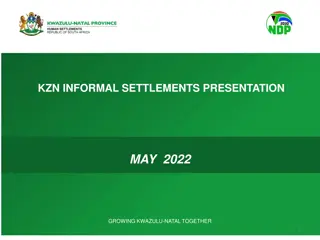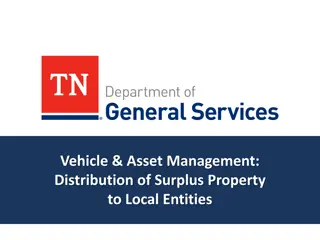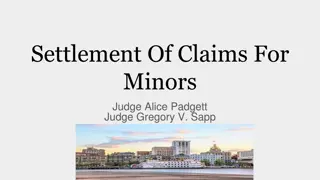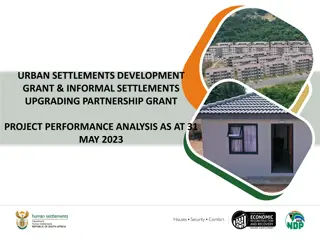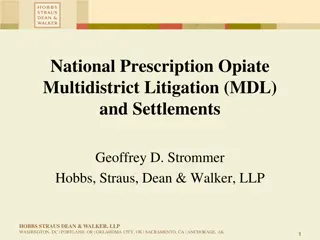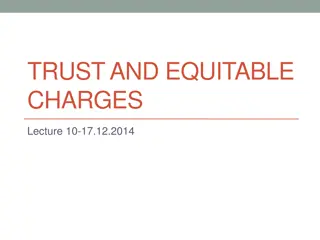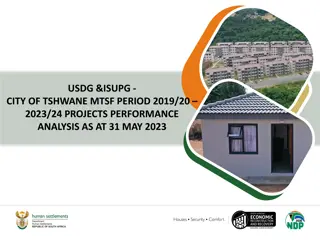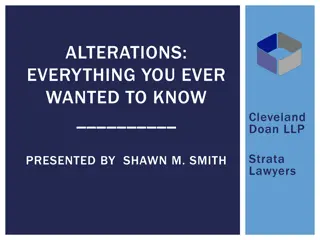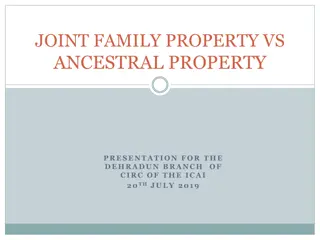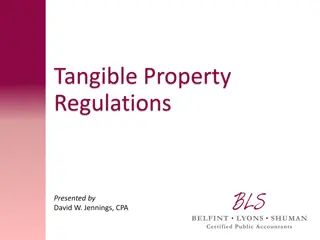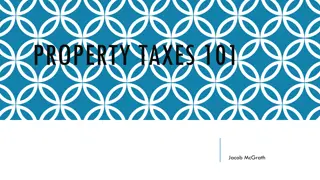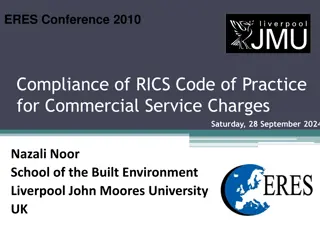Impact of Pandemic on Commercial Property Market and Dilapidations Settlements
The COVID-19 pandemic has accelerated pre-existing trends in the commercial property market, leading to shifts in retail, office, and industrial sectors. This has resulted in an increased focus on lease renewals, dilapidations settlements, and property repurposing. Understanding the fundamentals of dilapidations, including the role of valuers and building surveyors, is key to navigating post-pandemic challenges in the industry.
- Commercial Property Market
- Pandemic Impact
- Dilapidations Settlements
- Property Repurposing
- Lease Renewals
Download Presentation

Please find below an Image/Link to download the presentation.
The content on the website is provided AS IS for your information and personal use only. It may not be sold, licensed, or shared on other websites without obtaining consent from the author. Download presentation by click this link. If you encounter any issues during the download, it is possible that the publisher has removed the file from their server.
E N D
Presentation Transcript
Minimising Minimising Dilapidations Dilapidations Settlements Settlements
Pandemic has accelerated many pre-existing trends, as well as triggering new shifts Bricks and mortar retail was already in significant flux, and industrial/logistics investment gem Many offices were already past their sell by date and Covid has accelerated the flight to quality and in many locations, greater value can now be extracted by repurposing/redeveloping (often as resi) Since 2007 recession, leases of commercial & leisure properties have shortened to commonly 5-10 years, often with tenant breaks at years 3-5 This perfect storm of mounting obsolescence, evolving demand parameters and shorter leases/breaks, is making for an ever increasing volume of either lease renewals or, terminal dilapidations, negotiations Post Pandemic Commercial Property Market
Section 18 for repairs, and common law for decorations & reinstatement, cap damages at the lower of Cost of Works, or impact on Value (of the reversion ) The BS identifies breaches & prices remedies as the Expert in that field. It is not for the BS to either argue certain breaches Not Value Affective (NVA), or to advise you if a DV is necessary In practice, impact of dilaps on Value is all but always less. Usually far less. Because: a) The specialist Valuer will judge and persuasively argue, many breaches will be overridden (superseded) by reasonably assumed hypothetical purchaser s works to repurpose, modernise etc; and b) Whilst breaches for the BS to identify and price, not all affect Value (age, character and locality) Dilapidations Fundamentals
Commonly the claimed works are not done. Paragraph 9.4 of the Dilapidations Protocol obligates Landlords to produce their own DV in these cases. Don t settle without requiring one, then robustly rebutting it. It is a Valuer, not a BS, who advises if a Landlord s reletting with an SoC and/or extended RFP really supports the Landlord s dilapidations claim?!? Dilapidations Fundamentals Without a DV, it follows that settlement usually ends up about half way between opposing building surveyors opening shots. With a DV, settlement ends up at worse near, at best well below, your Building Surveyors minimum costs assessment
ROTHERHAM LL s Common Law Claim - 100,000 T s B.S RESPONSE - 50,000 DV - 20,000 RESULT - 20,000 Much of the claim related to the upper floors including: Strip out of partitions Redecoration Replace floor coverings The upper floors will attract little value, regardless of condition therefore these works unlikely to be value affective
NEWARK COMMON LAW AGREED BETWEEN B.S - 100,000 GF of property relet at lease expiry to Bodycare upper floors retained by Landlord DV - 50,000 mainly relating to roof works that would have to be undertaken as Landlord responsibility Two upper floors unlikely to be relet regardless of condition no market RESULT - 67,500
OXFORD LL s CLAIM - 300,000 T B.S RESPONSE - 165,000 DV - 50,000 RESULT - 50,000 NVA Works included: Internal Decorations Works to upper floor ancillary to be converted Simultaneously agreed sub lease Dilapidations
HEREFORD LL S CLAIM - 235,000 DV - 25,000 Property relet to The Range Deal included 168k incentive LL claimed this was in lieu of works Analysis of local comps illustrated this was market led Settlement 50,000
SLOUGH LANDLORD S CLAIM - 52,059.27 DV - Nil Example of excess supply of retail units relative to demand within Shopping Centre Half of units within same mall vacant SETTLEMENT - nominal
CANTERBURY Landlord undertook the works and relet. Claiming cost of works as a measure of their loss Cost of Works - 150,000 DV for T - 70,000. Had done considerable decorative works to upper parts not value affective In fact, the rent review clause in the new lease specifically directed that nil value would be applied to the upper floors at review Settlement - 75,000
Dont get a DV But see the case studies on both the Radius and Dilapsolutions websites Commonly, settlements end up at between the Tenant B.S s initial ( try on ) response, and about 50% of it In Shopping Centres, at zero Don t buckle under threats , fewer than 1% make trial, and over 80% settle through mediation The classic oxymoron Top Tips


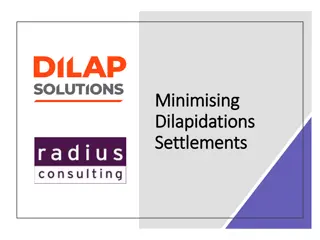



![Property Settlements in Family Law: Case Study of Stamatou & Stamatou [2022] FedCFamC1F 241](/thumb/63303/property-settlements-in-family-law-case-study-of-stamatou-stamatou-2022-fedcfamc1f-241.jpg)


